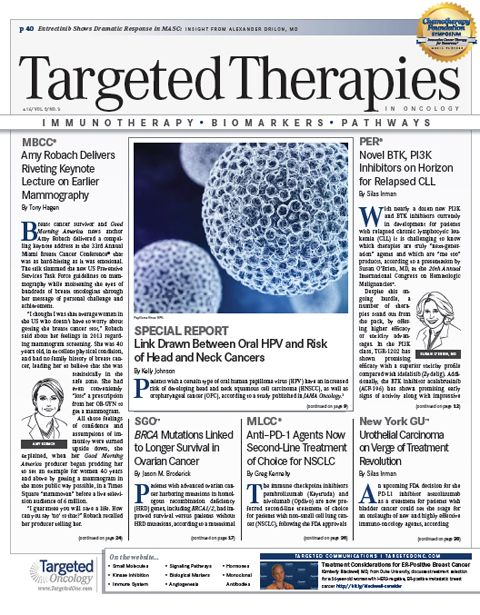New Mammography Guidelines Are Flawed
The breast cancer guidelines in the United States need to be fixed, which can only be accomplished by those on the frontlines. We need oncologists to chime into the discussion.
Mike Hennessy
It is impossible to traverse life without a friend or family member experiencing cancer. For many in the United States, this experience manifests as breast cancer, since 1 in 8 women are diagnosed with this disease at some point in their lifetime. As the most common cancer worldwide, screening for breast cancer is of the utmost importance.
Despite the prevalence, the US Preventive Service Task Force (USPSTF) kicked off 2016 with a controversial recommendation against screening for women under the age of 50 who are at average risk. This change, which was preceded by half a decade of debate, joined other guidelines suggesting a similar starting age, including those from the American Cancer Society (ACS).
Across guidelines, the term "average" is used to describe a woman's risk; however, many women are not unaware of their level of risk, which adds to the confusion. The group Bright Prink emphasized this point, after the ACS announced the new guidelines. To help provide important information, Bright Pink provides a helpful tool that helps women gauge their risk (http://assessyourrisk.org), and the group continues to recommend annual screening starting at age 40.
The success of earlier screening was showcased during the keynote address delivered by Amy Robach at the33rd AnnualMiami Breast Cancer Conference®. Robach shared her story about the importance of beginning screening at age 40, which was her age when she was diagnosed with stage II breast cancer after receiving a mammogram on live TV. Had she followed the new guidelines, her cancer may still be growing undetected today (see more, on page 24).
Each year, even in the wake of these guidelines, we are reminded prior to the month of April about the importance of cancer screening. Like clockwork a Presidential Proclamation is issued in March declaring April “Cancer Control Month.” This tradition was established in March 1938 and has been repeated every year since, with the latest proclamation made on March 31, 2016.
During Cancer Control Month the question that begs to be asked is, “Why is screening being cut in the same breath that diet, exercise, and lifestyle choices are heralded as keystones in controlling cancer?” Following the USPSTF guidelines, a joint statement from the American College of Radiology and the Society of Breast Imaging said the decision could be lethal for thousands of women. If this is truly the case, these guidelines are a step in the wrong direction toward controlling cancer.
The breast cancer guidelines in the United States need to be fixed, which can only be accomplished by those on the frontlines. We need oncologists to chime into the discussion. To contact the USPSTF, visithttp://bit.ly/USPSTF-contact
